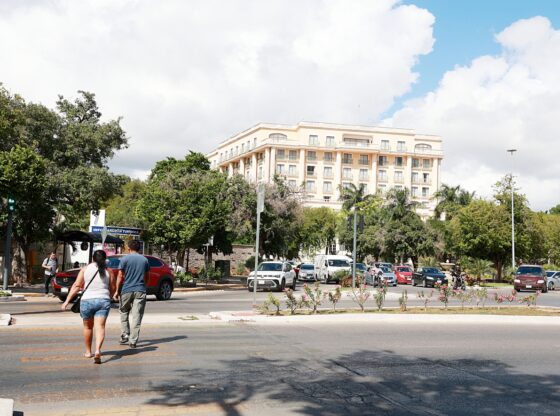The president of Yucatecan College of Architects, Georgina Salazar Solísreported that the organization seeks to actively participate in the Paseo de Montejo improvement project, with the aim of contribute to the rescue of the urban image of the avenue without excluding any sector of the citizenry.
Interviewed before the start of the school’s monthly assembly, held the night before last in the Marist Universitythe architect explained that the issue of Paseo de Montejo is a priority for the members.
“Now that there is an opportunity to renew the urban image of Paseo de MontejoNot only the bike lane, but also the vehicular flow, the islands, the lighting, the signage… there are many things that can be improved. At no time is it intended to leave anyone out,” he stressed.
The president pointed out that the school intends to be considered in the technical team that will work on improving the avenue.
“We are already submitting a request to be considered in this team that is being established. There is already consensus on the part of the College and we believe that this week we should begin to see this from the Montejo Walk”, he indicated.
Regarding the current project, the leader of the group considered that “it was very hasty when it was done” and that today there are more appropriate ways to resolve coexistence between pedestrians, cyclists and motorists.
He added that vegetation and landscaping must be planned with experts, because “when all this was done, mistakes were made, for example, some accesses were blocked, and all of this can be improved.”
During the assembly, which was open to the public, the president emphasized the need to recover the harmony of the urban environment and improve the connections of Paseo de Montejo with the Colón and Pérez Ponce avenueswhere “vehicular funnels” and small accidents are recorded due to current design.
“We want to return the image to which we were accustomed, contemplating everyone and leaving no one out,” he stressed.
In addition to the Paseo de Montejo, The school also analyzes the new Municipal Urban Development Planwhich the City Council put up for public consultation last November 4th. “We have already had three meetings as members and one with Implan to clarify doubts. We have until December 3 to submit our observations and proposals,” he explained.
The architect Salazar Solis He highlighted the importance of the entire society participating in the review of the plan, since “it talks about roads, transportation, the growth of the city and zoning.”
He remembered that the current plan dates from 2017 and “it is now necessary to renew it because the city has grown and there is chaos in some parts.”
The school’s proposals include a better regulation for vertical buildings, public policies against gentrification and clear criteria to protect built heritage without stopping investment.
“We want to densify the city, but not in any way. We also seek to prevent so many private gated communities from continuing to be built; we want them to continue being a city and not just walls,” he said.
After his intervention, the Assembly continued with the participation of the architects Gina Góngora Urcelay, Fernando Gómez Vivas, Sebastián Montalvo Millet and Esteban Hernández Martínfrom the offices Wanderings y Essential Studiowho talked about the project with which they won the Gold Medal at the XVI Yucatecan Architecture Biennial. The architect was also in the Assembly Josefina Rivas Acevedodirector of the School of Architecture and Design of the Marist University, who was in charge of the welcome.

